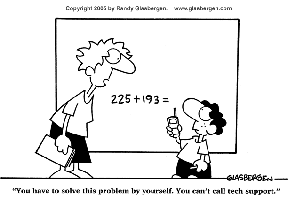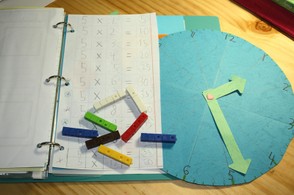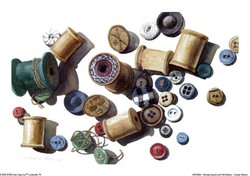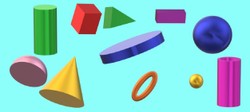
Visual Learning Strategies: What to Look For in Math Learning Platforms
We have all met students who have had anxiety about the subject of math. Some of us may have even been these students ourselves.
Helping Visual Learners Succeed in the Math Classroom
 We have all met students who have had anxiety about the subject of math. Some of us may have even been these students ourselves. There are a wide variety of factors that can cause anxiety in an academic setting. One common factor is not having the material presented in a preferred manner. For example, if you are a visual learner and your math teacher frequently presents lessons orally with very little visuals, it will be hard for you to retain the information. As a teacher, it is important to understand the visual components of an adaptive learning platform so that you can select one that will allow your visual learners to be successful.
We have all met students who have had anxiety about the subject of math. Some of us may have even been these students ourselves. There are a wide variety of factors that can cause anxiety in an academic setting. One common factor is not having the material presented in a preferred manner. For example, if you are a visual learner and your math teacher frequently presents lessons orally with very little visuals, it will be hard for you to retain the information. As a teacher, it is important to understand the visual components of an adaptive learning platform so that you can select one that will allow your visual learners to be successful.
Visual Learners: A Definition
The visual teaching method involves presenting concepts, ideas, data, and other information in a way that they are represented graphically and with images. Many visual learners prefer to communicate with others and to organize information through pictures, images, maps, and colors. Many visual learners are able to visualize plans, objects, and outcomes with ease.
Both cognitive psychology and educational theory research shows us that the majority of people in the world are visual learners. Thus, visual teaching methods are ideal for students of all ages. The theory of visual learning is also supported by Howard Gardner's Multiple Intelligence findings that illustrate that people have different learning preferences and strengths. Using a variety of teaching methods throughout a math curriculum or finding an adaptive learning platform with varied teaching methods will ensure that as many students as possible will succeed.
Visual Learning
Relation to Mathematics
There are visual images throughout every concept of mathematics. Consider language such as "Estimate how many." and "Which object is further away?" The images that these phrases conjure have inherent words and numbers attached to them. When students learn to use these images, words, and numbers subconsciously, they have a much better chance at succeeding with math.
Furthermore, as students reach higher elementary school grades, they will need to understand more abstract math concepts. The ability to visualize these concepts will be a huge asset. For example, consider the following problem: "How do you find the surface area of a cube?" Being able to envision the cube will greatly help you find the solution.
Visual Learning Strategies for Adaptive Learning Platforms
 There are a wide variety of applications for mathematical visuals, including understanding relationships, indicating scale and proportion, and clarifying volume and/or area. Models will assist students with interpreting, analyzing, and discussing a wide variety of data. Students must learn to create diagrams naturally, just as they would build equations or write sentences.
There are a wide variety of applications for mathematical visuals, including understanding relationships, indicating scale and proportion, and clarifying volume and/or area. Models will assist students with interpreting, analyzing, and discussing a wide variety of data. Students must learn to create diagrams naturally, just as they would build equations or write sentences.
It is important to consider an adaptive learning platform that includes some, if not all, of the following components. Consider which ones will be most relevant for your students and keep an eye out for them as you are previewing each adaptive learning platform.
Find Out Your Learning Style
Visual Learning Aids
- Webs. Webs illustrate how different information categories relate to each other. They give students structure for understanding, organizing, and prioritizing the ideas and facts. Typically the main ideas are in the center of the web with links to sub-topics on the outside.
- Concept maps. Concepts maps link two or more concepts with words to describe their relationship. This allows students to organize their knowledge and then expand their understanding of it, allowing them to make critical connections.
- Idea maps. Idea maps help students begin forming their ideas when they start projects, writing assignments, and presentations. Students can generate ideas and then follow them through to solve problems and plan their work in a visual manner.
- Plots, graphs, and charts. This category includes venn diagrams, axis or scatter plots, pie graphs (you can make fun pie charts for your elementary math students), timer series/timelines, and vertical bar graphs of stack plots.
Researching How to Listen with All the Senses
Visual learning Aids
eBay
Visual Learning Tools
Amazon
You might also like
Buttons from the Rag Bag! Button Jar Math ActivitiesSave the buttons from discarded clothing and recycle them as fun, hands-on ma...
Overcoming Difficulties Encountered with MathematicsMany students struggle with mathematics. Yet it is often the case that mathe...







 Blended Learning in the Elementary School Classroomon 04/18/2012
Blended Learning in the Elementary School Classroomon 04/18/2012
 Graphic Design Programs: Five Things You Didn't Knowon 03/27/2012
Graphic Design Programs: Five Things You Didn't Knowon 03/27/2012
 The Best-Kept Secrets of College Education: Community Colleges to Financial Aidon 03/27/2012
The Best-Kept Secrets of College Education: Community Colleges to Financial Aidon 03/27/2012
 Guide to the Benefits of Attending a Community Collegeon 03/27/2012
Guide to the Benefits of Attending a Community Collegeon 03/27/2012



What Experiences Can You Share? What Tips Do You Have for These Learners?
@katiem2 Glad to hear that this was useful! I am a visual learner myself, so I can relate to your daughter ;) Thanks for stopping by!
This is awesome, my daughter will get so much out of this, she is visual and about to start algebra, this is great math help, much appreciated. Thanks